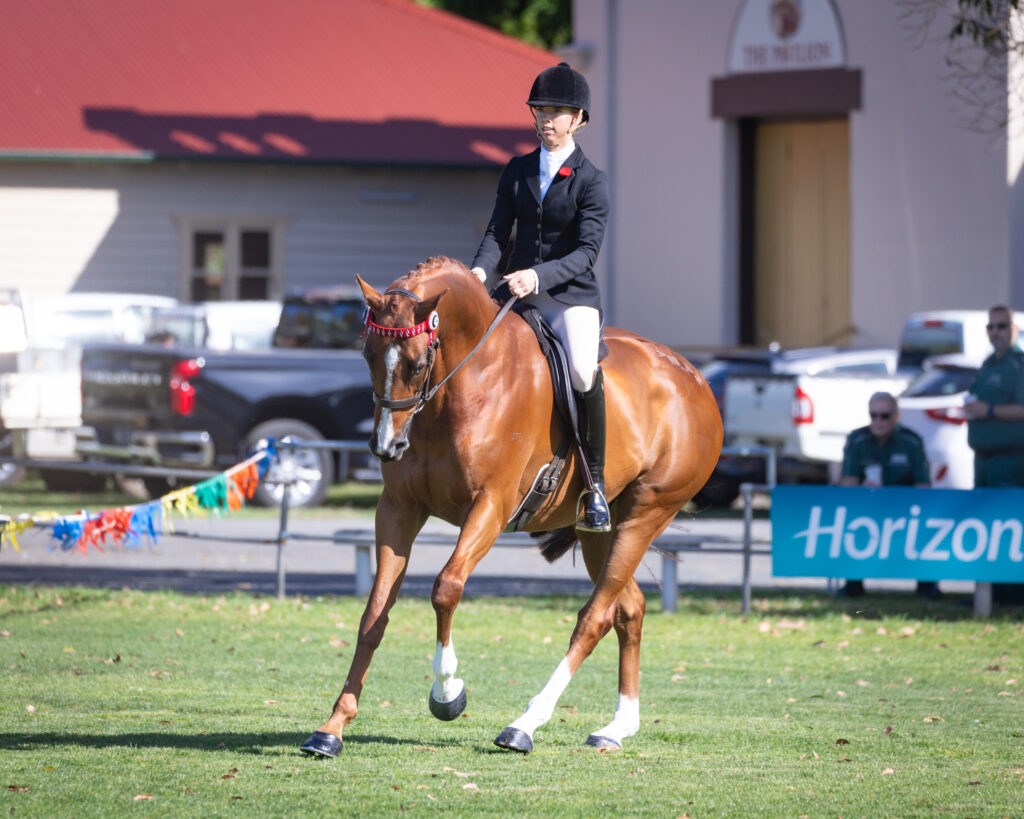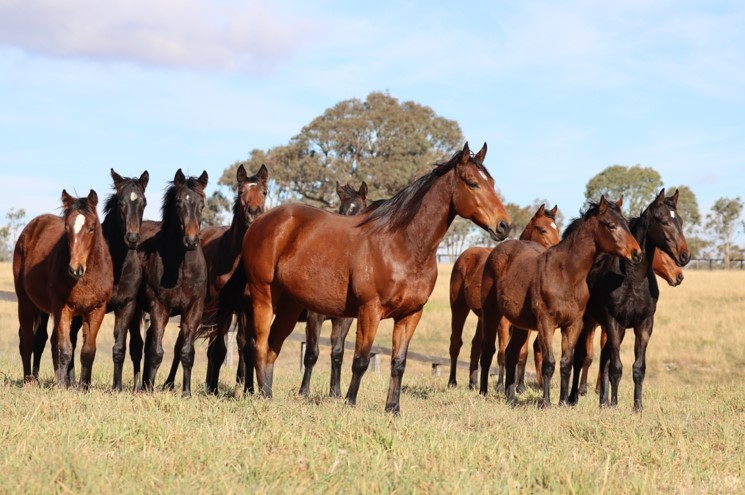For racehorse syndicates in Australia, equine welfare is becoming a fundamental part of their business operations. After buying a racehorse, the responsibility of the horse’s life-long health and wellbeing is predominantly held by the racehorse syndicate or owner. They hold great responsibility in rehoming the thoroughbred to a place which is suitable and will provide great care for the horse through its retirement. The type of home which a horse goes to upon retirement is largely dependent on its soundness, temperament, and history. In OTI’s experience with rehoming retired racehorses, we have seen our thoroughbreds enter a range of disciplines. These include equestrian horses, therapy horses, a nanny for younger horses, trail-riding horses or simply a companion horse.
Undeniably, racehorses encounter unique challenges when transitioning into retirement, stemming from their structured lifestyle and training regimes. One major challenge is the notable shift in routine; these horses are accustomed to highly structured schedules centered around racing and training. The sudden change in routine, where daily workouts may no longer exist, can present challenges of boredom and restlessness. Additionally, the mental adjustment to a new environment, often with different companions and surroundings, can be challenging for retired racehorses. Physical issues, such as injuries sustained during their racing career, may require ongoing medical attention, making proper veterinary care a crucial aspect of retirement. The process of finding suitable homes and ensuring a smooth adaptation to post-racing life poses another distinctive challenge, as not all retired racehorses seamlessly transition into alternative roles or find caring homes.
For racehorse syndicates & owners, addressing these unique challenges requires a holistic approach that considers the physical and mental history of the horse, along with the development of frameworks to support these thoroughbreds once a home has been found. The establishment of retirement funds is one way in which racehorse syndicates can actively contribute to the life-long welfare of their horses. In OTI’s case, for every horse that is sold, $2,000 is allocated to an ‘Equine Welfare Fund’. These funds are then readily available to assist our retired racehorses with a range of costs. These may include veterinary costs, farrier or dental costs, feed assistance or even transport costs. This fund has proved particularly beneficial since its inception in 2019. Furthermore, these funds can be used to support retirement organisations, who are vital in assisting with the transition of thoroughbreds into retirement. For example, OTI has enjoyed partnerships with Racing Hearts, Living Legends & Thoroughbred Sport Horse Association. Whilst not always achievable, racehorse syndicates can try to plan for their horse’s retirement options. Developing relationships with re-trainers and exploring each state’s Off The Track programs can be of great assistance in identifying a suitable home. By engaging in these initiatives, ownership syndicates can contribute to the overall welfare of racehorses, both during their racing careers and in their retirement.
Through OTI’s experience with rehoming retired racehorses, the versatility of the thoroughbred has become most evident. We have seen great success with our retirees in equestrian disciplines. Below you will see Happy Pharrell, who was purchased as a racehorse out of Europe, but now finds himself enjoying retirement as a show horse in Australia.

My Swashbuckler is another retired racehorse that has thrived, this time in a role as a trail-riding horse in New South Wales. He is known as ‘Mr Trustworthy’ and leads groups through rivers, over mountains and even to school drop offs!
Retired racehorses have also proved to be very useful in a ‘nanny’ role on stud farms. In this role, they are used as a companion to younger horses to keep them calm and comfortable in their paddocks. Pictured below is Casterton, a former OTI racehorse who now resides at Twin Hills Stud as a nanny.

Another key role for retired racehorses is the role of a therapy horse. Through our partnership with Racing Hearts, an Equine Assisted Therapy organisation, we have seen that the use of thoroughbreds in assisting with human therapy has been extremely beneficial. To read more about Lisa Coffey’s Racing Hearts, please click here.
Ultimately, when buying a share in a racehorse, it is important to keep equine welfare front of mind. Assessing a racehorse syndicator’s equine welfare frameworks and initiatives is a useful step when entering racehorse ownership. Thoroughbreds face a range of unique challenges when transitioning, but they are incredibly versatile animals who have many valuable roles to play in retirement.

